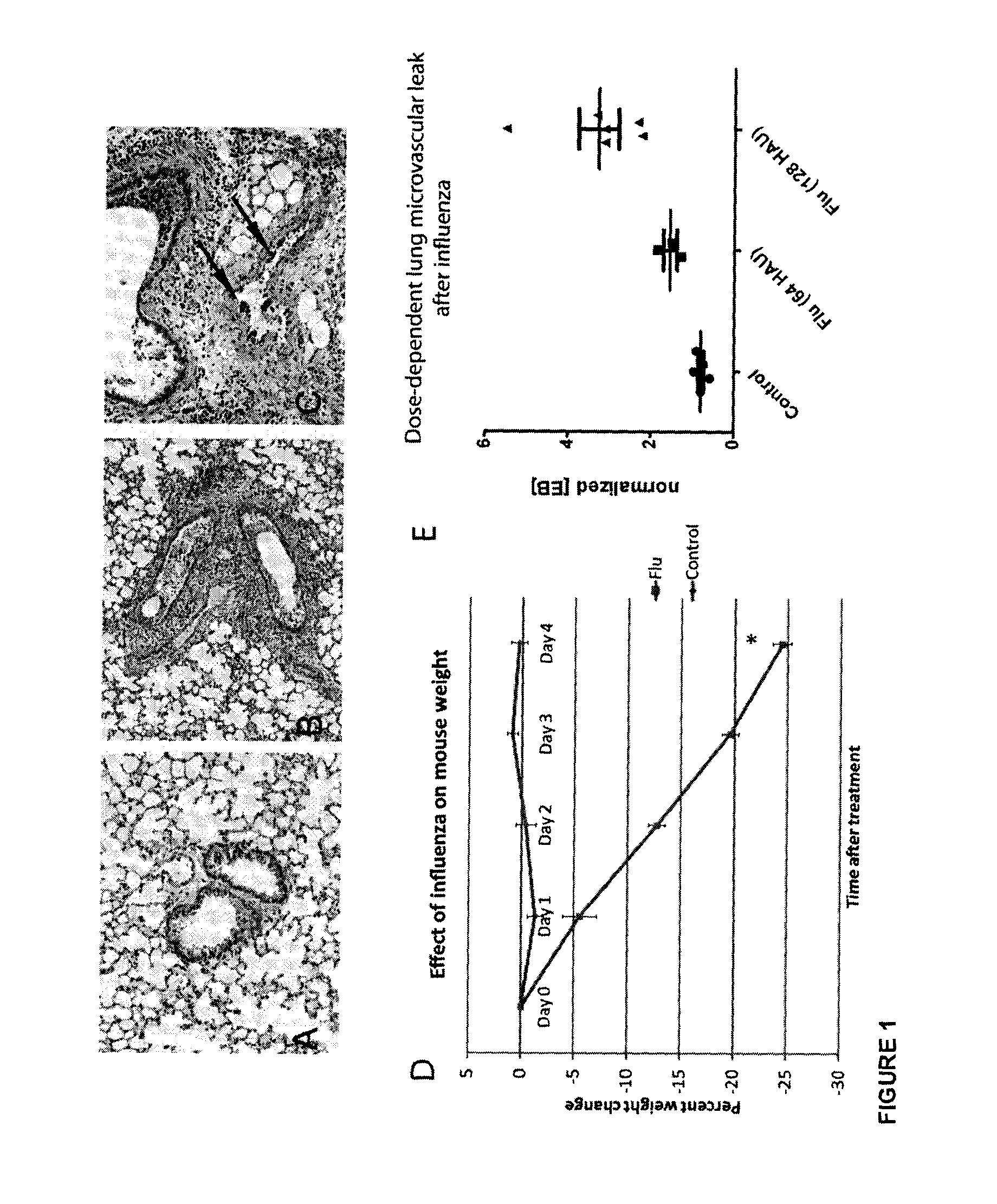Methods, uses and compositions of tie2 agonists
a technology of agonists and agonists, applied in the field of methods and uses of agonists, can solve the problems of complicated use of agonists, damage to alveoli, mechanism of lung injury, etc., and achieve the effects of preventing and/or reversering endothelial permeability, promoting angiogenesis, and protecting against vascular leakag
- Summary
- Abstract
- Description
- Claims
- Application Information
AI Technical Summary
Benefits of technology
Problems solved by technology
Method used
Image
Examples
example 1
Materials and Methods
Preparation of Vasculotide
[0191]T7 peptides were reacted with a 10 kDa tetrameric polyethylene glycol-maleimide. Specifically, activated PEG and T7 peptide were added to a 50 mL round bottom flask protected from light and PBS (pH 6.5, 22 mL) was added for a final peptide concentration of 5 mg / mL. The reaction was stirred at room temperature, the pH verified using a pH meter and the progress of the reaction monitored by HPLC at various time intervals. The reaction mixture was then acidified to pH 3.5 after which the following steps were performed:
Step 1 FLASH LC:
[0192]Column: Reverse Phase C18, Fuji, 200 A, 40 g column 30 μm (custom packed)[0193]Gradient Profile: 10-100% B in 63 mins[0194]Eluents: Eluent A=0.1% TFA in water, Eluent B=0.1% TFA in 60% acetonitrile, 40% water[0195]Detection: UV (λ-210 nm / 254 nm)[0196]Column temp: room temperature[0197]Flow Rate: 40 mL / min
Step 2 Preparative HPLC:
[0198]Column: Reverse Phase C18, Daiso Bio C18, 200 A, 10 μm 25 mm×250 m...
PUM
| Property | Measurement | Unit |
|---|---|---|
| molecular weight | aaaaa | aaaaa |
| molecular weight | aaaaa | aaaaa |
| time | aaaaa | aaaaa |
Abstract
Description
Claims
Application Information
 Login to View More
Login to View More - R&D
- Intellectual Property
- Life Sciences
- Materials
- Tech Scout
- Unparalleled Data Quality
- Higher Quality Content
- 60% Fewer Hallucinations
Browse by: Latest US Patents, China's latest patents, Technical Efficacy Thesaurus, Application Domain, Technology Topic, Popular Technical Reports.
© 2025 PatSnap. All rights reserved.Legal|Privacy policy|Modern Slavery Act Transparency Statement|Sitemap|About US| Contact US: help@patsnap.com



